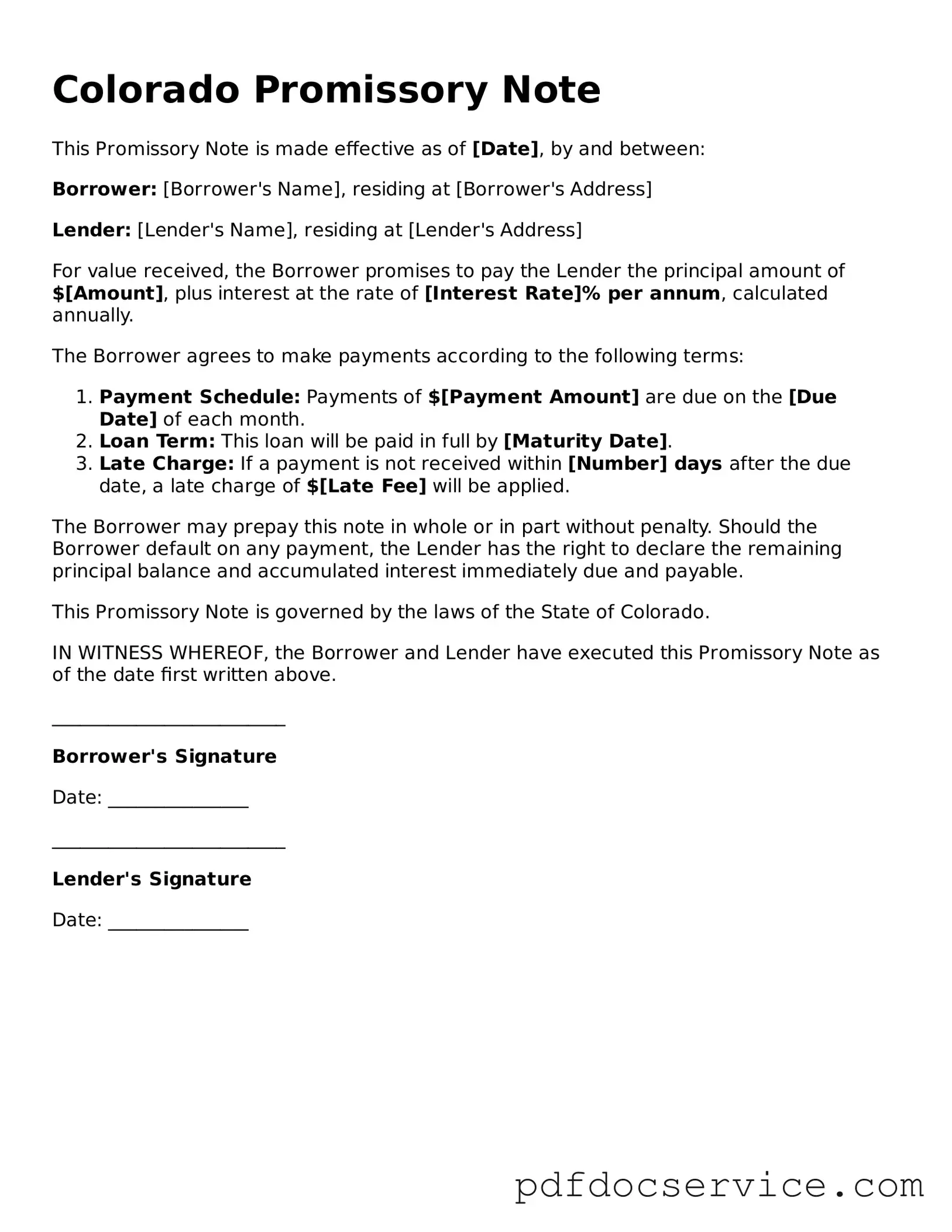Printable Promissory Note Template for Colorado
A Colorado Promissory Note is a legal document that outlines a borrower's promise to repay a loan to a lender under specified terms. This form serves as a written record of the debt and includes details such as the loan amount, interest rate, and repayment schedule. Understanding the components and implications of this document is essential for both borrowers and lenders in Colorado.
Open Promissory Note Editor
